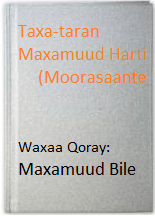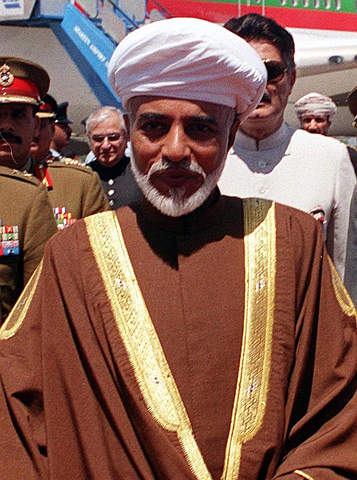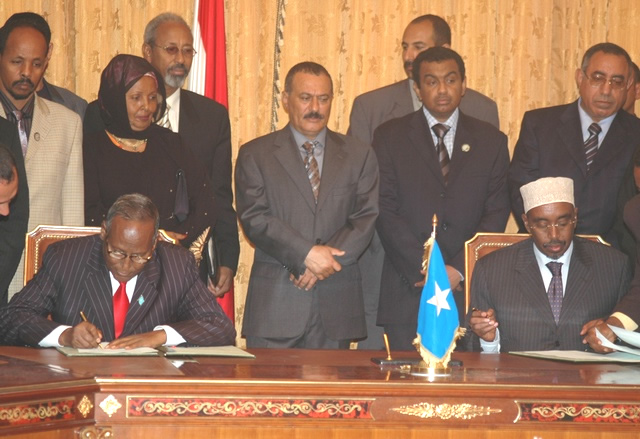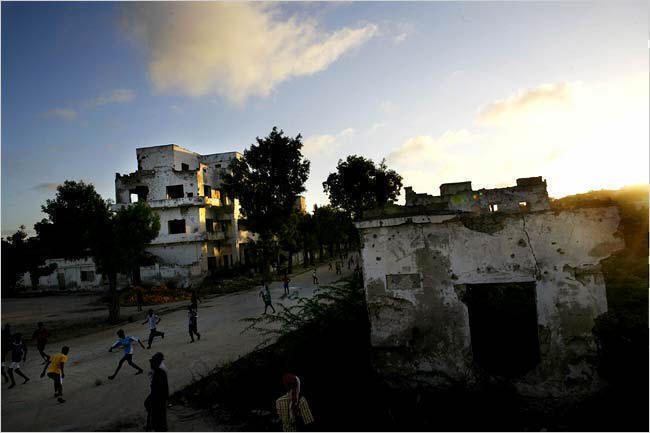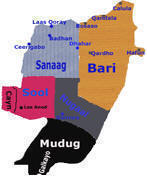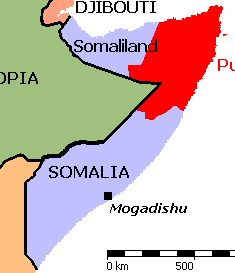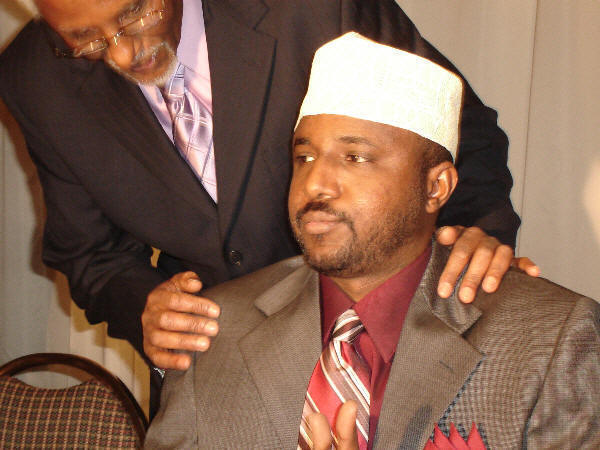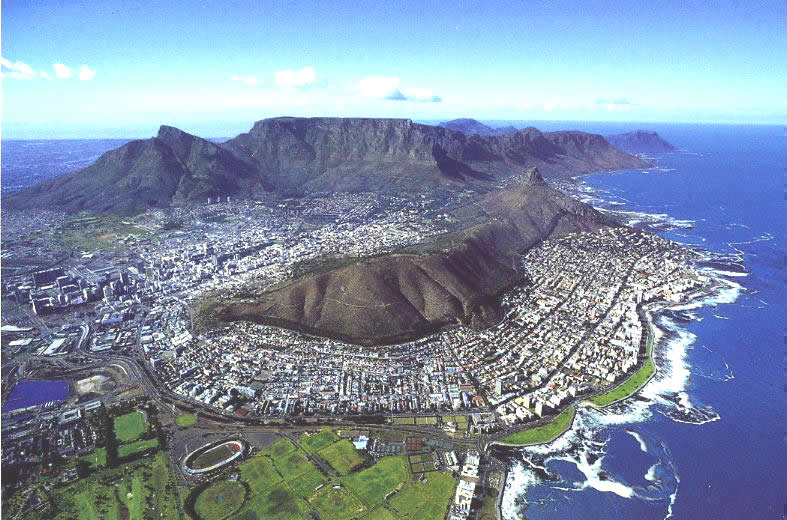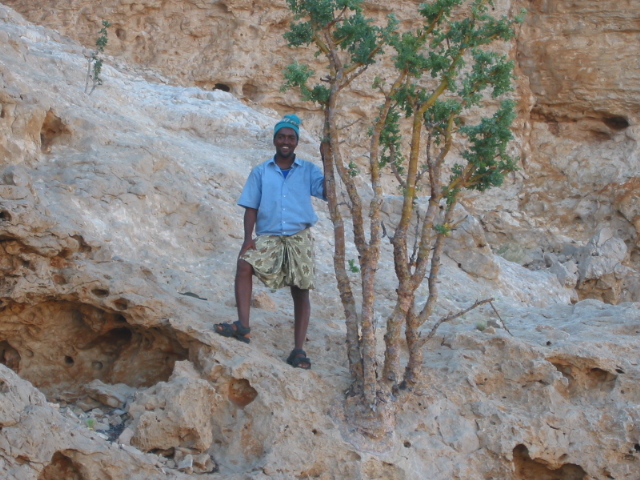
Scientists zero in on ancient
David Perlman Chronicle Science Editor
The
May 08, 2010

Thousands of years ago, there once stood a place called Punt, a land of gold and ebony, and ivory, frankincense and myrrh.
To the pharaohs who built their palaces along the Nile, the
The pharaohs sent great expeditions to Punt; they welcomed delegations of Puntites to their palaces, and their scribes recorded their gifts and commercial products in detail.
But not one of the Egyptian scribes who wrote about the strange land - Ta netjer, or God`s Land, as it was sometimes called - ever revealed exactly where it lay.
The riddle was left to modern-day scholars to solve.
Now researchers armed with the sophisticated tools of modern physics have tackled the problem and declared that while they still can`t tell exactly where Punt was, they do know where it wasn`t.
Disputes over Punt`s location have gone on for decades. Punt (pronounced Poont), archaeologists have said, was in
Narrowing the search
At a recent meeting in
The Land of Punt, the scientist said, must have existed in eastern North Africa - either in the region where
The three experts, all specialists in arcane disciplines, were:
-- Nathaniel J. Dominy, a UC Santa Cruz anthropologist and primate ecologist who studies the lives and habitats of apes, baboons and other monkeys, as well as human evolution;
-- Gillian Leigh Moritz, a specialist in manipulating the mass spectrometer in Dominy`s laboratory to analyze the stable isotopes of oxygen and other elements;
-- Kathryn A. Bard, a Boston University Egyptologist who for nearly 10 years has been excavating the ancient Red Sea harbor of Wadi Gawassis, where royal sailing expeditions were sent to Punt and returned with precious cargo.
The key to solving the mystery of Punt was Dominy`s intimate knowledge of baboon geography - there are five species of the animals, and Dominy can identify the African regions where each one has its specialized habitat. He also knows the characteristics of the body tissue of each species.
"We used baboons as a lens to solve the Punt problem," he said. "They were among the most important commodities brought back to the pharaohs from Punt, but until now no one has known where those baboons came from."
The
Clues in the water
Despite their age, those hairs still contained trace molecules of the water the animals drank when alive, and Moritz could analyze that water to determine the ratio of two oxygen isotopes in the hairs.
It`s a complicated bit of chemistry, but every oxygen atom is made up of three different stable isotopes - their atomic masses - and the ratio between two of them, oxygen-16 and oxygen-18, varies significantly in the rainfall and humidity from one part of the world to another, even from different parts of a continent.
Moritz used her mass spectrometer in the Dominy lab to determine the oxygen isotope ratios in the hairs of each mummified baboon, and compared them with the ratios in all five species of baboons living in varied parts of
"The results of the mass spectrometer showed us that the region of
Bard, the Boston University Egyptologist, said the findings are convincing and make Punt more real than ever, but she suggests that the land might also have existed in a similar nearby baboon region - perhaps in eastern
Remains of ships
The ancient harbor on the Red Sea where Bard is excavating is called Mersa/Wadi Gawassis, and Bard`s excavations have yielded well- preserved ship`s timbers, anchors, coils of ancient rope, and the rigging of seagoing ships that date from the reigns of several Pharaonic dynasties.
From that port, a pharaoh named Amenhotep IV sent a major expedition to Punt some 3,800 years ago during the eighth year of his reign, Bard and her colleagues have discovered.
"We`ve made a wonderful find there," Bard said. "It was really amazing - 40 cargo boxes from the ship, and some were inscribed with the name of that very king, the name of the scribe, and the inscribed words, `wonderful things from Punt.` "
The woman who became pharaoh
Kausalya Santhanam
The Hindu
December 19, 2008
Queen Hatshepsut`s life reads like a modern best seller. She ruled ancient
Her story seems as threaded with love, mystery and murder as a modern best seller. Wearing the false beard that distinguished the rulers of ancient
The ancient Egyptians strongly believed that life would be perpetuated in the other world, after death. Mortuary temples were constructed by the rulers on a grand scale. We stand lost in admiration as we gaze at the massive rectangular structure which owes its presence to the queen- pharaoh.
The temple appears to spring from the hill of pale brown rock, so fabulous is the architecture, and the vision that built it. It is a most unusual building quite unlike the temples we get to see later in the rest of
Hathshepsut was married to Thuthmose II, her half -brother. Although it seems strange and shocking to us today, male royals in ancient
Towering obelisk
We learn that Hatshepsut`s reign was marked by the building of numerous monuments. In the evening at the great
The
As with many ancient structures in
The building is in the form of a vast, three-tiered terrace with wide steps and ramps leading to the final one which has shrines to Hathor, and other gods. The pillars are striking and many of them are crowned by the image of the beautiful pharaoh queen, round faced and smiling. Our guide seems to think that it was a case of �photo-shop,� �because any ruler wants to be remembered as good looking more so if she is a woman.� But he is prejudiced, we discover when we later read accounts that speak of the queen`s beauty.
To reinforce her claim to be the throne, Hatshepsut claimed descent from the gods as was customary with the pharaohs of
On the hills above can be spotted various caves �where the temple priests lived and were buried.�
Later in the day, when we visit the colossi of Memnon, enormous ruined statues, located a few kms away, we can still see the
She was evidently not only an astute wielder of power but also a far-sighted planner who made sure that her monument on the hillside made its presence felt for miles � and through the millennia.
If only her name had not been so difficult to pronounce it might have been even more on people`s lips today, is the tongue�in�cheek comment of the youngest in our tour group, who as usual has the last word.
� 2008 Kasturi & Sons Ltd
Boxes of wonder help to locate lost
Norman Hammond Archaeology Correspondent
The Times
January 31, 2006
TREASURES from the lost
More than a score of wooden cargo boxes coated with gypsum were found in the sand-filled cave, one of a series which lies at Wadi Gawasis, just south of Safaga on the western Red Sea coastline and about 300 miles southeast of
One of the boxes had a painted hieroglyphic inscription with a royal cartouche, probably of the Pharaoh Nimaatra Amenemhat III (1831-1786BC). It dates to Year 8 of his reign, and describes the contents of the box as "The wonderful things of Punt". Exactly what these "wonderful things" are will have to await the opening of the boxes.
Punt is best known from the portrayal of an expedition sent there by Queen Hapshetsut around 1470BC: numerous reliefs on her mortuary temple at Deir el-Bahari in
The new finds make it clear that Punt was reached by sea: the expedition, led by Professor Kathryn Bard, of
The cedar wood came from Lebanon, but the project`s wood specialist, Dr Rainer Gerisch, has also identified pine and two species of oak, all from southwest Asia, and in the past few days he has also
reported the presence of ebony. One cave complex functioned as an arsenal or chandler`s store: inside were found 60 to 80 coils of ship`s rope, which Professor Bard says were "all neatly tied and knotted, just as the sailors left them almost 4,000 years ago".
The Wadi Gawasis maritime base was used for several centuries: seals found included some of Twelfth Dynasty date, roughly 2000-1800BC, as well as a new stela of Amenemhat III bearing all five of his royal names, which have been deciphered by Dr Elsayed Mahfouz, of the
Professor Bard notes that the stratigraphy of these sites demonstrates at least four expeditions to the site from the Nile Valley during this period, while the later date of pottery found with the steering oars makes it possible that they were used in Queen Hatshepsut`s ships on her famous expedition to Punt.
Egyptian officials have taken great pleasure in announcing the discoveries: "For the Ancient Egyptians, Punt was a source of prized goods such as incense, ivory, ebony, gum and the hides of giraffes and panthers that were worn by temple priests," said Dr Zahi Hawass, chairman of the Supreme Council of Antiquities in
� 2006 Times Newspapers Limited. All rights reserved
Hank Burchard
The
November 05, 1993
ETHIOPIA generally comes to Western notice in times of tragedy: the failure of the democracies to stop Mussolini`s brutal invasion in 1935, the slaughter and famine that accompanied the overthrow of Emperor Haile Selassie in 1974, the ongoing bloody civil strife.
But the "Jewel of the Horn of Africa," one of the oldest nations on earth, has survived many episodes of invasion, hunger and internal turmoil during its more than 2,000-year history. The endurance and vitality of these ancient people are gloriously apparent in an unprecedented exhibition of Ethiopian religious art at the
It`s the first major exhibition to come out of Ethiopia, according to curator Gary Vikan, one of a team of scholars reveling in these ancient artifacts, illuminated manuscripts, coins, processional crosses and icons. The galleries glow and gleam and glitter, and the story that goes with these sacred objects is just as colorful.
Ethiopia`s beginnings as a nation may well extend beyond the beginnings of history. It may have been the fabled Land of Punt, rich in incense, gold, silver and slave traders, that Egyptian mariners sailed in search of as early as 2800 B.C.
According to Ethiopia`s great national saga, the biblical Queen of Sheba was actually Makeda, Aksumite Queen of Ethiopia. She journeyed to Jerusalem seeking the wisdom of Solomon, and came home carrying Solomon`s first son, who would become King Menelik and found the Solomonic Dynasty that culminated with Haile Selassie and may yet produce more rulers of Ethiopia.
Menelik returned to
And Ethiopia`s many Christians claim to be the most faithful in all Christendom, following unswervingly many early doctrines from which the Eastern Orthodox Church has fallen away. The kingdom was converted to Christianity by Frumentius, a Syrian scholar who was captured and enslaved but rose to prominence in the Ethiopian court.
And then there`s Ethiopia`s special relationship with Islam, which dates from the time when Muhammad`s persecuted early followers - including Umm Habibah, his future wife - were given refuge in Ethiopia. They went there on the advice of Muhammad`s grandfather, who described it as "a country where no one is wronged, a land of righteousness." Therefore Ethiopia was exempted from Muhammad`s jihad against unbelievers: "Leave the Abyssinians in peace," the prophet said.
Well. That covers some of the highlights of the background of the exhibit`s first section. There are five more sections, each more beautiful than the last. Better get an early start.
�Copyright 1993
FORUM
It`s time to teach ancient Egypt`s black heritage
Atlanta Journal and Constitution
May 27, 1990

Charles S. Finch III Charles S. Finch III, M.D., assistant director of international health at the Morehouse School of Medicine, has conducted private studies in Egyptology and African history since 1971.
Until recently, it was assumed in the West that ancient
Many African-Americans are insisting that the ancient Egyptians, since they originated in the interior of
These are not idle questions. Who the ancient Egyptians were, and where they came from, can have important ramifications for interpretations of world history.
While many academics now lament the "racializing" of historical study, such a posture begs the issue. We live in a racially polarized world largely because of the massive distortions of African history perpetuated by academic historians. Redressing the balance by a correct reconstruction of history requires that we understand clearly who did what, where and at what time - impossible without a delineation of the racial origins of the ancient civilization builders.
Clear testimony to the ethnicity of the ancient Egyptians comes from their own inscriptions. Their name for their country was "Kamit." This word - derived from the root "kam," meaning black - denoted "the black land." While this in part referred to the dark soil from the Ethiopian highlands deposited in
They claimed that one branch of their ancestors came from Punt, now identified as
Moreover, their word for "east" - "yabi" - is the same as their word for "left," and their word for "west" - "imen" - is the same as their word for "right." This means that the ancient Egyptians oriented themselves southward despite their northern hemispheric location. No people immigrating into the
The Old Testament provides additional evidence of the ancient Egyptians` racial affiliation. The story of Noah in Genesis reveals that his son Ham, the ancestor of all black peoples, had four sons:
More explicit eyewitness testimony comes from the pens of ancient Greek writers. Herodotus, who spent seven months in
Those who challenge the identification of the ancient Egyptians as black Africans point to their mural figures. These figures are variously tinted yellow, brown, red and black in different scenes. The hues are cited to disprove the connection to black Africa, or at least to prove that ancient
But this delicate reasoning does not hold up under close examination. While Egyptian murals and reliefs depict people with a range of colorings, the black African Negro predominates. Scene after scene shows this racial type as peasant, priest and pharaoh.
A vignette from the tomb of Seti I portrays individual representatives of the four major peoples with whom the Egyptians were most familiar: an Egyptian, a northern Libyan, a Sudanese and a Western Asiatic. What is noteworthy about the tableau is that the artist drew the Egyptian and Sudanese exactly alike, including black skin color.
Modern technology has also been brought to bear on this question. The late Senegalese polymath Cheikh Anta Diop tested the mummified skin of several 19th-dynasty Egyptians for melanin concentration. He found that all of the specimens showed melanin concentrations comparable to what is found in sub-Saharan Africans. This finding apparently so unnerved museum curators from
Much of the argument for a "mixed" ancient Egyptian culture rests on the famous bust of Nefertiti, which depicts a fair-skinned woman assumed to be Caucasian. What is confusing is that other reliefs of Nefertiti show her with the thick lips and broad nostrils characteristic of a Negroid countenance.
But whether Nefertiti is Caucasian or not is beside the point. The presence of a number of whites in the later periods in ancient
Linguistic analysis provides further evidence of the African origin of Egyptian civilization. It used to be said that ancient Egyptian belonged to the Semitic language family. In 1920, E.A. Wallis Budge was the first to assert that Egyptian was fundamentally an African language. Later, Dr. Diop of
Finally, Professor Bruce Williams of the University of Chicago`s Oriental Institute has analyzed a group of artifacts recovered from a gravesite at Qustul in northern Sudan. His analysis reveals the presence of a pharaonic civilization there, called Ta-Seti, at least three centuries before the first Egyptian dynasty. This means that Egyptian civilization came down the
Facing the facts squarely, free from the blinders of racial preconceptions, the inevitable conclusion is that ancient
FORUM is an outlet for commentary by
�Copyright 1990 The
A Parched Land Battered by Time
SCOTT BLAKEY
The
November 25, 1985
THE NATION of Somalia covers the so-called Horn of Africa like enamel on a molar.
It is an ancient property, a nation of poets, known in biblical times as Punt, the land of frankincense and myrrh. Somalians trace their bloodlines to Mohammed himself. The Somali sands soaked up the blood of would-be conquerors and native defenders for centuries, and the British finally established an uneasy hegemony in 1920 only after strafing and bombing the Dervish outposts from airplanes.
Independent now,
It is an emerging nation struggling with health, economic and social problems, and engaged in a traditional war over grazing lands with neighboring
This complex land is the subject of a fascinating little sleeper of a documentary titled "The Parching Winds of Somalia." For those who overlooked its premiere, Channel 9 is airing it tomorrow at 2:30 p.m.
The film maker is Charles Geshekter of
Geshekter spends several minutes of his film detailing the beginnings of modern
"Poetry," he notes, "and an oral tradition are survival skills." It was the poetry Geshekter was after, but he ended up documenting a people at a crossroad.
There is a marvelous scene in the film: a group of smiling, nomadic tribesmen huddled about a fire in the reaches of some God-forsaken desert smiling and rocking to an ancient poem. The sound comes from a Japanese transistor radio and the broadcast from the national radio station in Mogadishu, the nation`s capital.
"The Somalis," observes Geshekter, "are not frozen in time." That is for sure.
THE SOMALIS have no railroad, few paved roads, no independent press, but they have a strong and independent women`s movement that is trying to halt the ancient practice of female circumcision. The movement, which has strong support from enlightened men, is also pushing for better schools and health care. The infant mortality rate is abominable.
Somalia`s strategic position, bridging Africa and the Middle East, makes it delectable fare for the superpowers.
"How they`ll handle it all, I don`t know," says Geshekter of the Somalis. "These are difficult times for all of us, and the Somalis, underneath it all, are people like those anywhere."
� 1985 Hearst Communications Inc. All Rights Reserved.
|
|
 Sawirro Somaliya  |

|
GOVERNANCE
The Scourge and Hope of Somalia A New Book By Ismail Ali Ismail  Which Way to the Sea, Please? By Nuraddin Farah Dhulkii Burcad-Badeedda .jpg) Budhcad Badeed Weli Qiil ma Leeyahay? 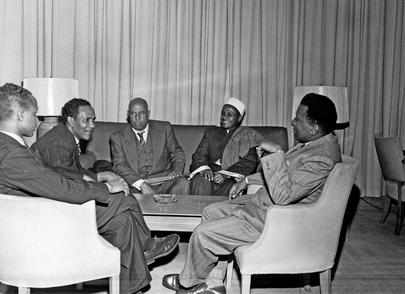 SYL LETTERS By A S Faamo |
 |
 |
© Copyright BiyoKulule Online All rights reserved�
Contact us [email protected] or [email protected] |

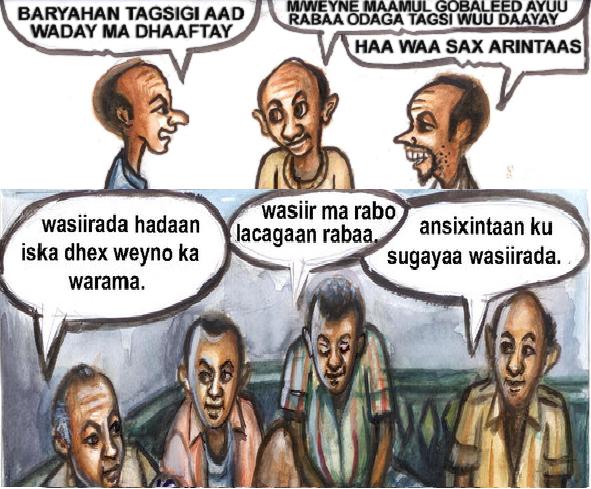



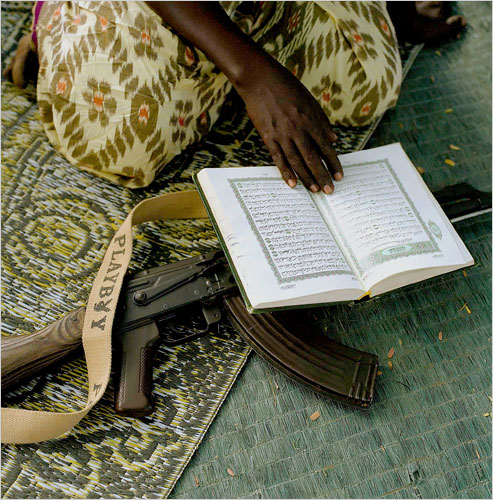


.jpg)
